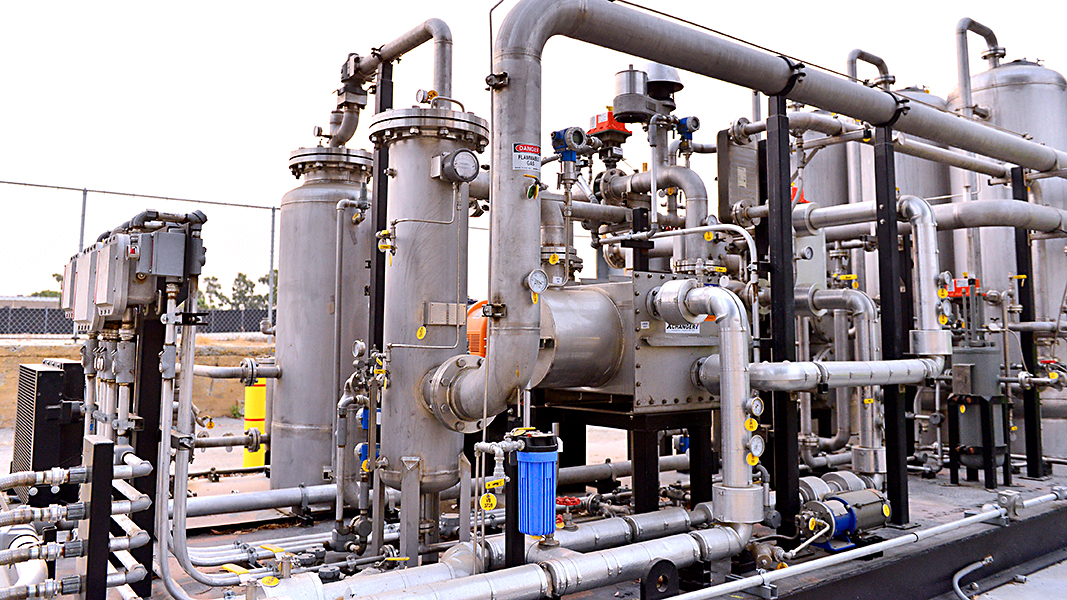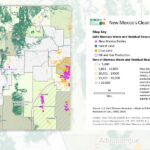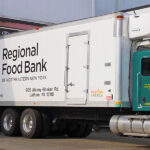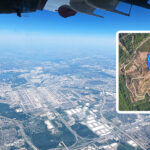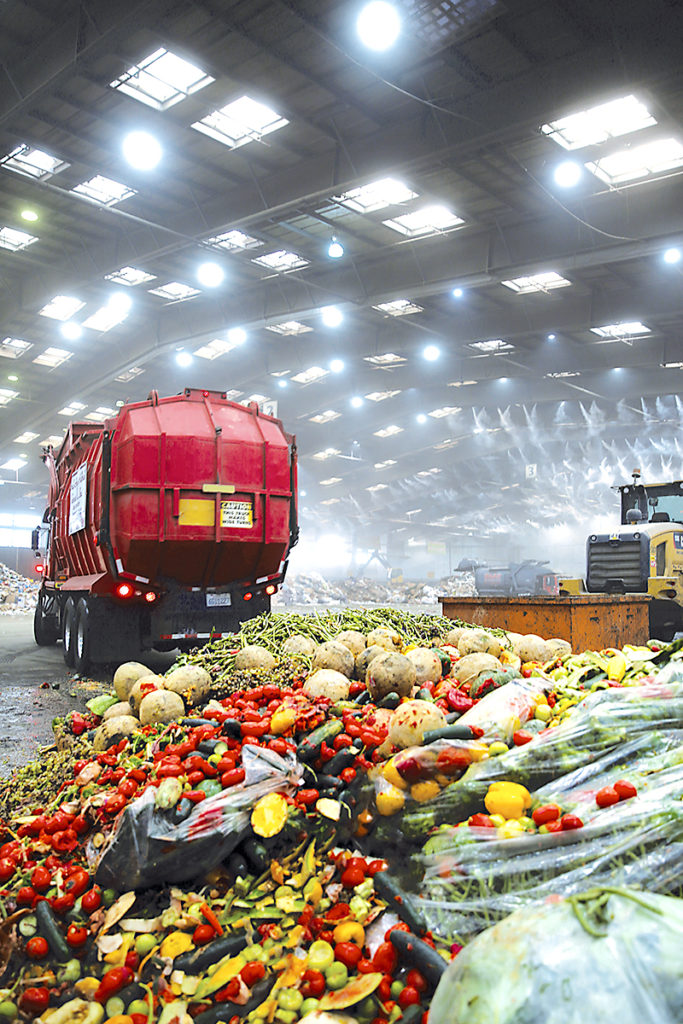
(Top) Newly operational biogas purification system at Sanitation Districts’ JWPCP. (Above) Food waste ready to be slurried at the Puente Hills MRF. Photos courtesy of Los Angeles County Sanitation Districts.
Last December, BioCycle had a feature article on the Los Angeles County Sanitation Districts (Sanitation Districts) newly opened food waste preprocessing facility at the county’s Puente Hills Materials Recovery Facility (MRF). Source separated commercial food waste is slurried with a DODA bioseparator, then stored in tanks for transport to the Sanitation Districts’ Joint Water Pollution Control Plant (JWPCP), located in Carson, California. At the time of the article, about 30 tons/day were being processed at the Puente Hills MRF and unloaded into the headworks at the JWPCP. The MRF has capacity to process 165 tons/day of food waste. A slurry receiving system was being installed at the plant, along with a biogas purifcation system. Additional slurried food waste was being brought to JWPCP by commercial haulers. Biogas was used to generate electricity for wastewater treatment plant operations.
Fast forward to December 2020. The Sanitation Districts recently started up its biogas purification system, supplied by Unison Solutions and designed and installed by TetraTech. “With this new biogas purification system, we now produce renewable natural gas (RNG) that is used to fuel vehicles like cars, buses and trucks,” noted Robert C. Ferrante, Chief Engineer and General Manager for the Sanitation Districts. “We know that many cities [in California] are grappling with how to meet state requirements for recycling food waste and are pleased to offer a complete and cost-effective solution.” The purification system is capable of producing the RNG equivalent of 2,000 gallons/day of gasoline (760,000 gasoline gallon equivalents/year), which is dispensed at the Sanitation Districts’ nearby fueling station that is open to the public. Only pipeline natural gas was used for fueling at this station prior to having RNG available.
The digesters produce about 5,000 standard cubic feet per minute (scfm) of biogas, some of which is used to keep the reactors mixed and heated. Some is sent to the Sanitation Districts’ power plant located at the Carson facility. The remaining biogas is sent to the new purification system to make fuel grade RNG. “Because the Sanitation Districts manage both solid waste and wastewater, we already had most of the infrastructure needed for food waste recycling,” explained Bob Asgian, head of the Sanitation Districts’ Solid Waste Management Department. “We also received a grant from the California Energy Commission that helped fund the new biogas purification facility. As a result, we were able to complete our system relatively inexpensively and pass those savings onto our customers. Use of our system has been steadily growing and we have additional available capacity to help more cities.”

Sanitation Districts’ first slurry receiving facility has two offloading stations, each with two storage tanks.
The slurry receiving facility (SRF #1), sized to accept 124 tons/day of food waste, is installed and operating. The SRF#1 consists of two offloading stations; each has two storage tanks and feeds one digester. “There are also recirculation pumps to help recirculate and equalize the levels between the tanks and feed pumps to deliver the slurry to the digesters,” explains William Chen, Supervising Engineer in the Sanitation Districts’ Energy Recovery Section. “The customer trucks arrive at the facility, hook up to our system and self-pump their material into a tank as directed by our on-site operator. The whole process takes less than an hour.”
The slurry is pulse fed directly into the digesters steadily throughout the entire day in an effort to avoid any “shock” to the digester. “We also limit the maximum amount of food waste slurry that we feed in order to maintain adequate hydraulic retention time,” adds Chen. “We target 10% food waste on a solids basis and 30% on a volume basis compared to the entire volume in the digester.” The JWPCP has a total of 24 stirred tank reactors; two are currently used for codigestion.
The Sanitation Districts is starting construction of a second SRF, which is expected to begin operating by April 2021. The capacity of SRF #2 will be 186 tons/day of diverted food waste. Currently, two out of nine of the food waste slurry “customers” (counting its own MRF as one of the two) are offloading at SRF#1. The rest continue to offload at the headworks of the facility. “It’s our intention to preferentially send all food waste to the SRFs as soon as we can,” notes Chen.


